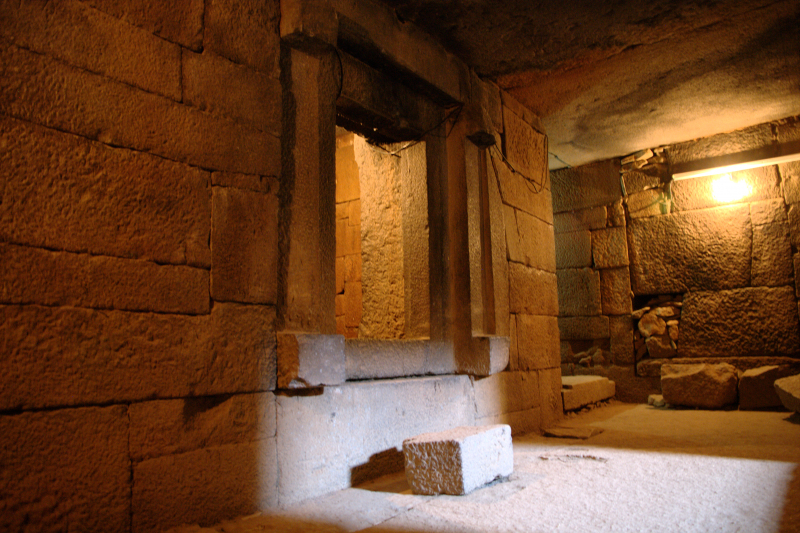Tombs of Kings Kaleb & Gebre Meskel
One of the top most beautiful historical sites in Ethiopia, these two graves, located on a tiny hill 1.8 kilometers northeast of the Northern Stelae Field and giving views of the jagged highlands of Adwa, are attributed to the 6th-century King Kaleb and his son, King Gebre Meskel, according to local folklore. Although the construction of the twin graves is similar to that of the Tomb of the False Door, they are more sophisticated, with irregular-shaped, self-locking stones that do not require iron clamps.
The most sophisticated tomb is the Gebre Meskel (south) tomb. The perfection of the joints between its stones is unparalleled in Aksum. The tomb has one chamber and five chambers, one of which has an extraordinarily well-carved entrance leading into it. There are three sarcophagi in that room, one of which is ornamented with a cross comparable to the Christian crosses found on Aksumite coinage. This leads to a date in the sixth century AD, which, unusually, agrees with local legend... Even though the rest of the narrative has Meskel buried at Debre Damo.
King Kaleb's tomb, like Meskel's, is reached through long straight stairs. Inside, the stones are bigger, more angular, and less neatly connected. Few believe Kaleb was buried here. The popular belief is that his remains are buried at the Abba Pentalewon monastery, where he lived after abdicating the crown. The tomb's incomplete condition matches the hypothesis. According to local legend, a hidden tunnel connects here to the Red Sea.
Address: Enno Littman St., Aksum, Ethiopia









